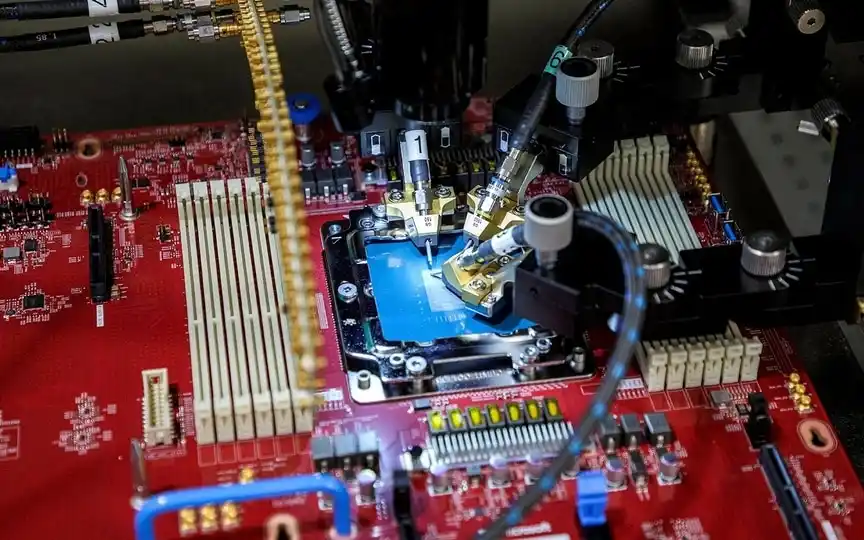Unlock the Secrets of Your Health with Chipmaking X-Ray Check-Ups!
Omron Corp., a Japanese company specializing in health-care equipment and factory automation, is targeting the profitable chipmaking equipment market as a means to drive its future expansion.
A Kyoto-based electronics company will launch an X-ray scanner this spring that will better detect flaws in advanced semiconductor manufacturing and improve production yields for the world’s largest chipmakers. The VT-X950 machine produces 3D images of chips with a resolution sufficient to identify defects on a scale of 1 nanometer, at least a generation ahead of current best-in-class silicon manufacturing technologies.
Since the scans take only 30 seconds each, the chipmaker can monitor production in near real time and make adjustments and repairs more efficiently. The yield, or percentage of defect-free chips produced from each silicon wafer, is a closely watched metric for manufacturers such as Taiwan Semiconductor Manufacturing Co. and Samsung Electronics Co. – it affects each company’s costs and speed in fulfilling customer orders.
“The demand trend in the semiconductor industry is to manufacture more different chips in smaller batches, but that would never be economically feasible without real-time CT scanning,” Kazuhisa Shibuya, director of inspection systems at Omron, said in an interview.
CT, or computed tomography, is the mainstay of medical diagnostics and has also become a key quality control tool in chip manufacturing. Ninety-year-old Omron, which earns more than half of its ¥876 billion ($5.9 billion) annual revenue from factory automation products, entered the semiconductor supply chain in 2012 with the launch of the VT-X900. That remains a small part of its business, largely confined to a few major chipmakers, Shibuya said.
The 55-year-old civil servant is confident that demand will increase as the production of chips becomes more and more complex and expensive. In an area of just a few square centimeters, the makers have to scribe metal lines thinner than a hair and deposit thousands of nanoscale solder bumps. New technologies for stacking chips into three-dimensional structures – such as TSMC and Samsung’s gate-all-around architectures – raise precision requirements.
“The need for CT scans as part of the semiconductor manufacturing process is urgent,” Omdia analyst Akira Minamikawa said. “As the industry pursues shrink and chip technology, the level of bonding technology required has increased dramatically, especially in the last couple of years.”
Today’s Most In-Demand chips, Nvidia Corp.’s top-of-the-line AI accelerators, are bottlenecked by TSMC’s ability to manufacture sophisticated packages to house them. Quality control and yield improvement are paramount in such circumstances, as even a small misalignment can render tens of thousands of dollars worth of chips worthless. X-ray chips during manufacturing can help detect defects and allow workers to fine-tune the process as needed.
Shares of Sony Group Corp. fell 4.7% earlier this month after the company said it was having trouble mass-producing its latest smartphone camera sensor, which ended up cutting the business’s operating profit outlook by 15%.
Traditionally, chip makers have relied on so-called functional tests to see if a device is working as designed. CT has also been used, but at a much slower pace: picking sample units from production lines for X-ray inspections in a separate room, which can take up to an hour. According to Toyo Securities analyst Hideki Yasuda, the need for faster inspection machines will increase dramatically. The cost of high-end chip manufacturing dictates more real-time monitoring to minimize silicon waste, he said.
Omron’s CT scanners are the only realistic option for chipmakers to install on their assembly lines, Shibuya said, because no other equipment can produce high-quality CT images in real time. The latest model cuts the scanning time in half compared to Omron’s previous model.




